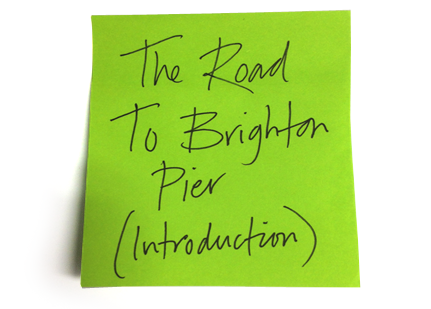This was for a travel magazine – written in their house style.
I love Iceland, it’s like nowhere else on earth. The landscape is spectacular but it’s the people that really won me over.
I wanted to use something specific to show their unique and completely individual take on life and, as this was for the December issue, the Yule Lads seemed perfect.
With its abundance of snow, its remote northern position and its ready supply of elves and reindeer, you might be forgiven for imagining Iceland as the homeland of Santa Claus. Not so. In this wild and mysterious country they have 13 Santas, and if you misbehave, their mother will come and get you.
A short stroll along the streets of Reykjavik after midnight on a Saturday is all you need to realise that in Iceland, they do things differently. The pavements will be crowded with revellers who all look as though they’re in avant garde indie bands. People here don’t follow the herd with fashions or trends, everyone dresses in their own individual, quirky way.
It’s this independent spirit that typifies Iceland. They have their own unique approach to life; whether it’s the peculiar but logical way the windows in your hotel room open or how numbers are listed in the phone book (by Christian name). Björk, in her own country, is by no means unusual.
It’s inevitable then, that their festive celebrations should be individual and more than a little bizarre.
The ‘Yule Lads’ arrive at Icelandic homes one after another on the nights leading up to the 25th December. Although centuries older, the tradition firmly took root when a collection of folktales by Jón Árnason in 1862 set their names and gave their number as 13. Each Yule Lad has a particular activity with which to harass the population:
Stekkjarstaur (Sheep Worrier/Stiff legs)
Suckles the milk from sleeping ewes.
Giljagaur (Gully Gawk)
Drinks the creamy froth from milk pails.
Stúfur (Stubby)
Small and very good at hiding in kitchens to sneak leftover food.
Þvörusleikir (Spoon Licker)
Very thin and emaciated, he too hangs around kitchens searching for scraps. Spoons in particular.
Pottasleikir (Pot Licker)
He is especially fond of the hardened crusty bits that collect around the rims of pans.
Askasleikir (Bowl Licker)
Specifically askurs – wooden bowls with ornately carved lids. Each household member would have their own.
Hurðaskellir (Door Slammer)
He enjoys waking up the household by banging doors as loudly as possible in the dead of night.
Skyrgámur (Skyr Glutton)
Skyr is a dairy product, quite similar to yoghurt.
Bjúgnakrækir (Sausage Stealer)
Although old and wizened, Bjúgnakrækir is adept at climbing high up to the rafters to get at the strings of sausages that used to hang there to save on living space.
Gluggagægir (Window Peeper)
He’s on the lookout for small items to pilfer. If spotted by a child, he’ll make faces to appear frightening.
Gáttaþefur (Door Sniffer)
Loiters around kitchen doors where baking can be smelled. Until recently, flour was very rare in Iceland and regarded as a luxury item reserved for Christmas.
Ketkrókur (Meat Hook)
Reaches down the chimney to try and snag any meat hanging from the rafters. Most families usually eat foul smelling skate on this day in order to foil him.
Kertasníkir (Candle Beggar)
Before electricity, candles were used to brighten the house ready for Yuletide celebrations. Made from animal fat they were, if you were really desperate, edible.
Together, these characters reveal a great deal about the country’s history and culture. Eleven of them, for example, are completely obsessed with their stomachs.
Before technology allowed regular trade with Iceland, food was extremely valuable as the formidable landscape makes growing crops practically impossible. Aside from the savage winter weather, the island is virtually one big volcano. The geothermal activity just under the surface now provides most of the country’s energy but has always made agriculture very difficult. An attempt to establish a potato harvest apparently failed when the crop was pulled out of the ground already cooked.
The population therefore has always had to make the most of what they could get. This is why, on a traditional Icelandic menu, you may find such delicacies as puffin meat, singed sheep’s head and the infamous Hákarl – shark meat that has been buried underground for six months to allow the toxins in the flesh to rot away.
The fact that the Yule Lads have even survived this long after the arrival of Christianity is no doubt due to Iceland’s proud literary heritage and strong story telling traditions. The vast, sprawling sagas written in the 13th and 14th centuries must have made the savage cold of the winter and 24 hour darkness a little more bearable.
The Lads’ own roots lay in the sagas where their mother, Grýla, appears in several of the earliest. She is an enormous, bloodthirsty troll with a taste for stewed child. Often depicted with extra eye in the back of her head, she also has hooves and 15 tails clutching sackfulls of naughty children. Even her cat was a figure of terror as it was likely to devour any child who didn’t get a new article of clothing for Christmas. This idea lingers on in the popular saying: ‘You don’t want to go to the Yuletide Cat.’
In olden times the Yule Lads themselves were vicious and frightening. When families were cooped up together in remote farmsteads for months on end, a strong threat was obviously handy for keeping bored, mischievous children under control. It worked so well that by 1746, the Lads had become so bloody that the governing Danes issued a law banning them: ‘The foolish custom, which has been practised here and there about the country, of scaring children with Yuletide lads or ghosts, shall be abolished.’
Fortunately the Icelanders, as usual, maintained their independent spirit and stories of the Yule Lads persisted. In recent times however they have mellowed considerably and are considered to be harmless pranksters rather than terrifying monsters. Icelandic seamen brought home stories of Santa Claus and by 1930, the Lads had begun to adopt his more benevolent approach to the season.
Now, it’s customary for a child to place a shoe on their windowsill on each of the 13 nights before Christmas. If they’ve been good, they’ll receive a small gift. If they’ve misbehaved, they’ll get a potato. Their costume has also been adjusted. Instead of wool and lambskin clothing in earthy colours they’re more usually depicted wearing Santa’s outfit of Coca-Cola red.
It’s taken a while, but it seems that Iceland is eventually beginning to merge with the outside world. As always though, it will retain something of its own typically strange and wonderful individuality.






